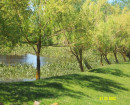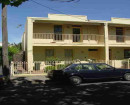Former Ballarat Royal Australian Air Force (RAAF) Base
1 AIRPORT ACCESS ROAD MITCHELL PARK, Ballarat City
-
Add to tour
You must log in to do that.
-
Share
-
Shortlist place
You must log in to do that.
- Download report
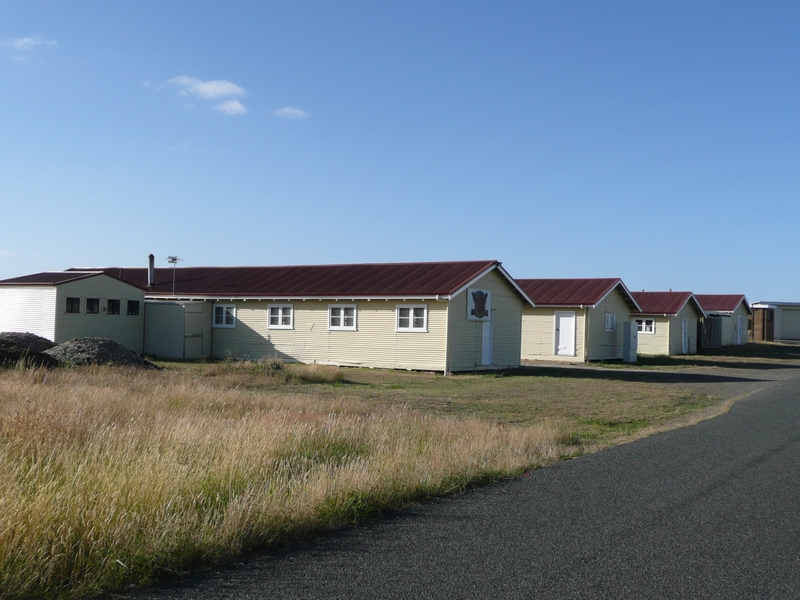

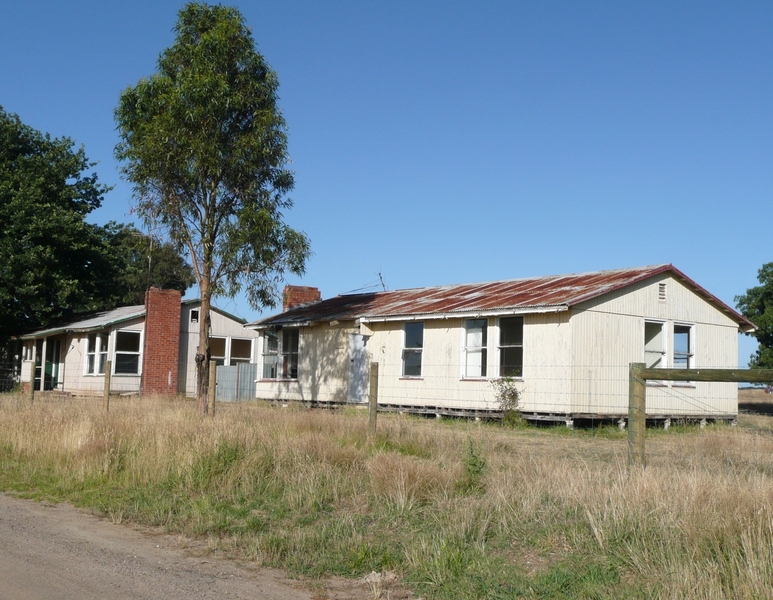
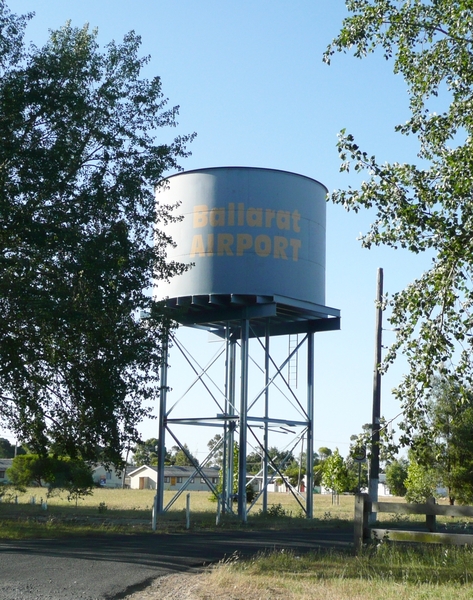
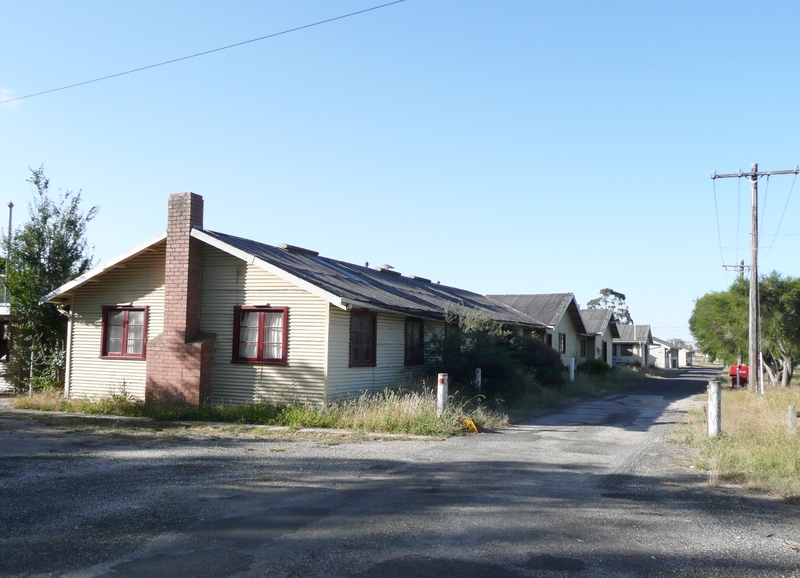
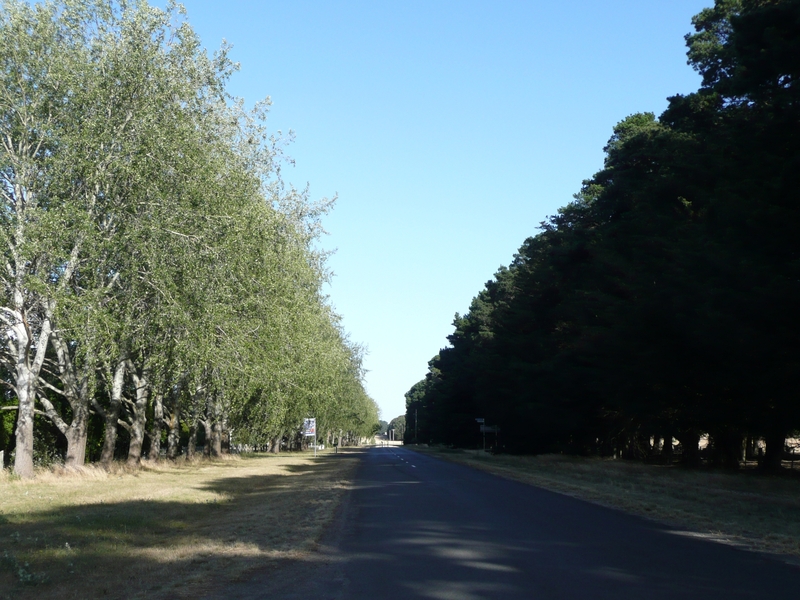
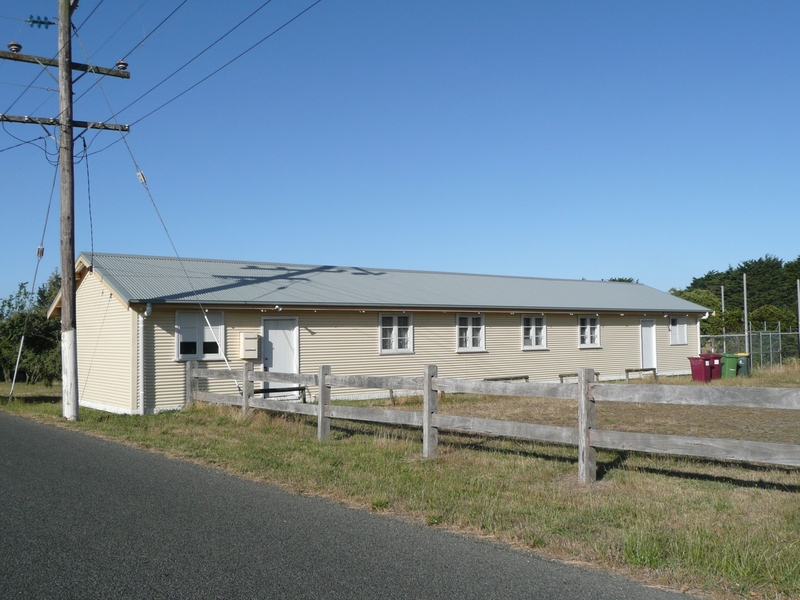
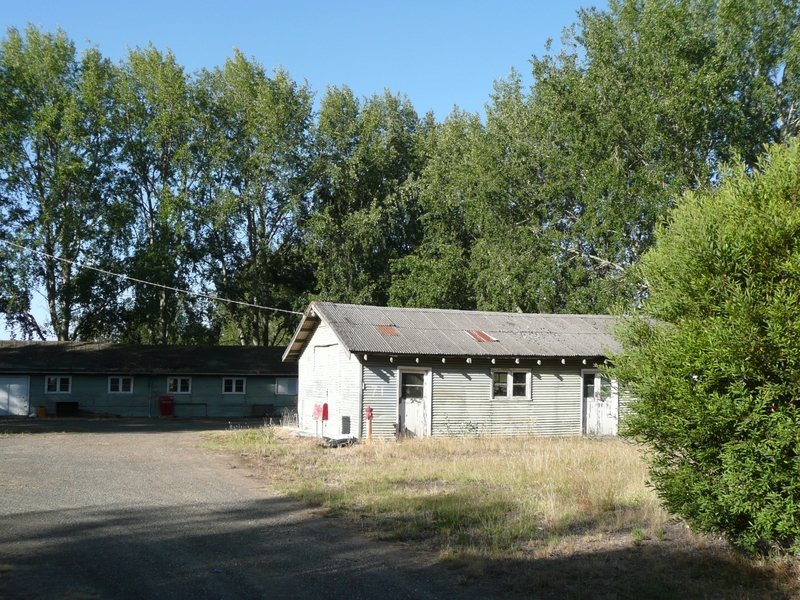
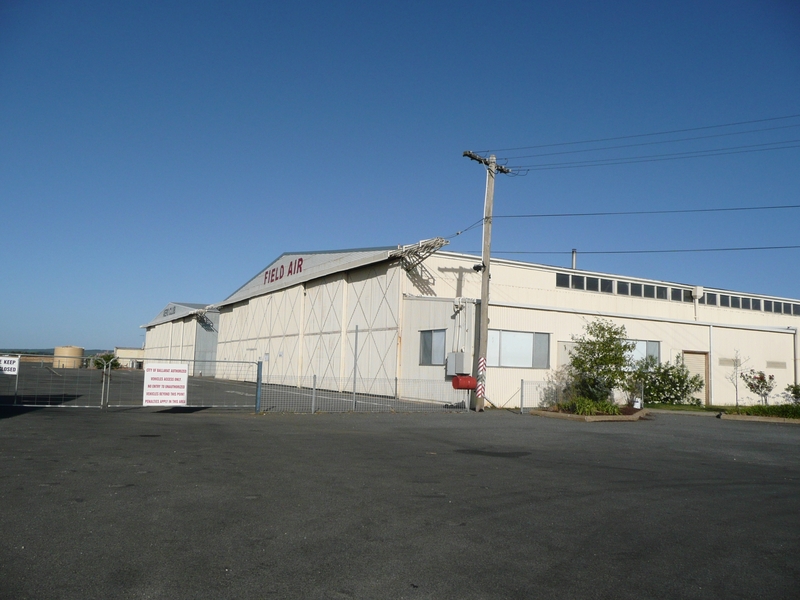
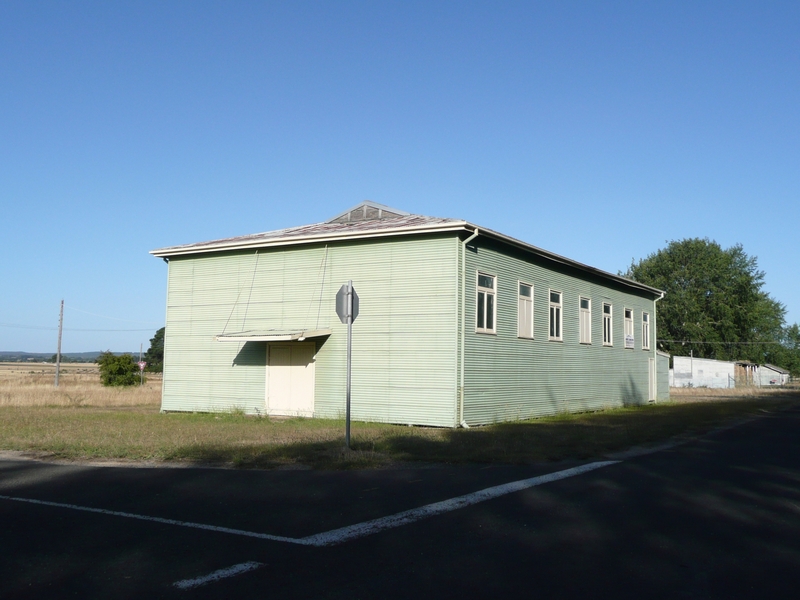
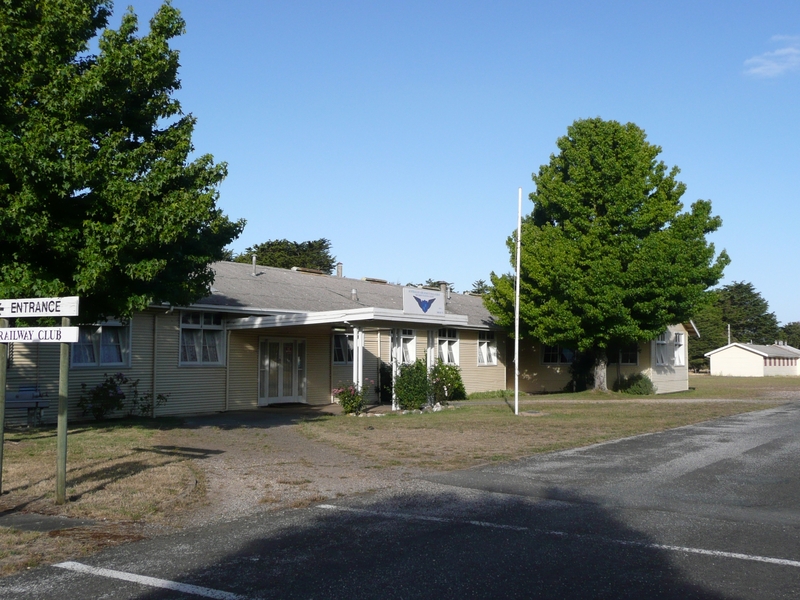
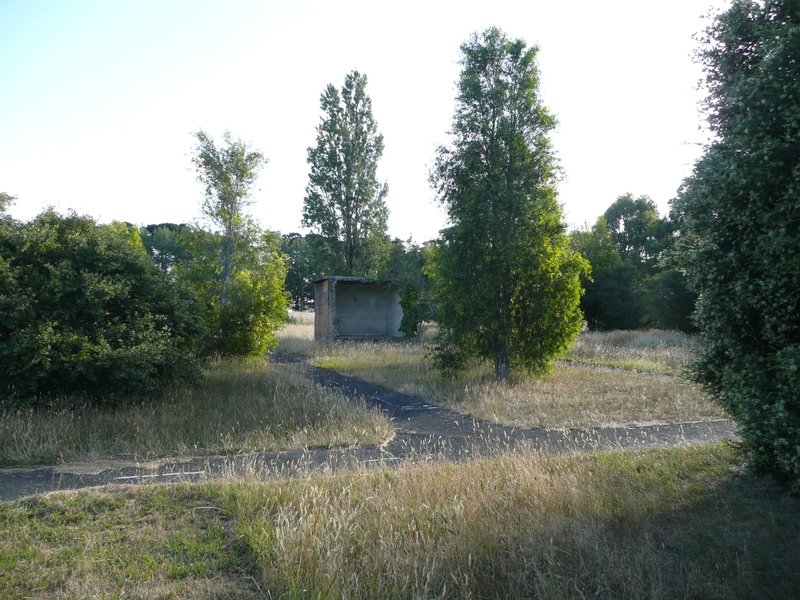
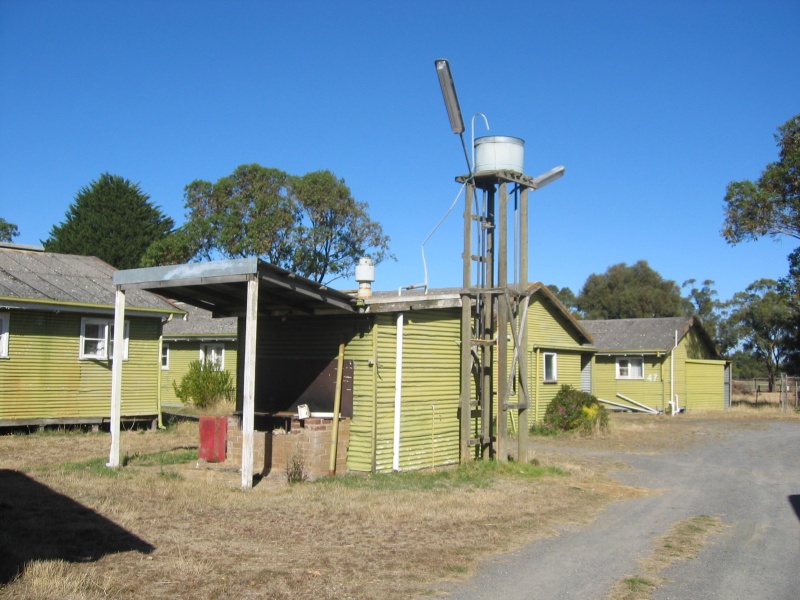
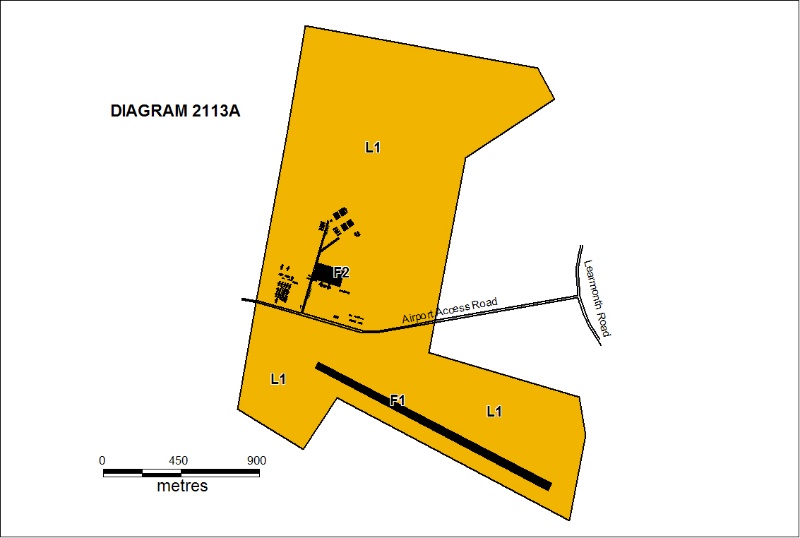
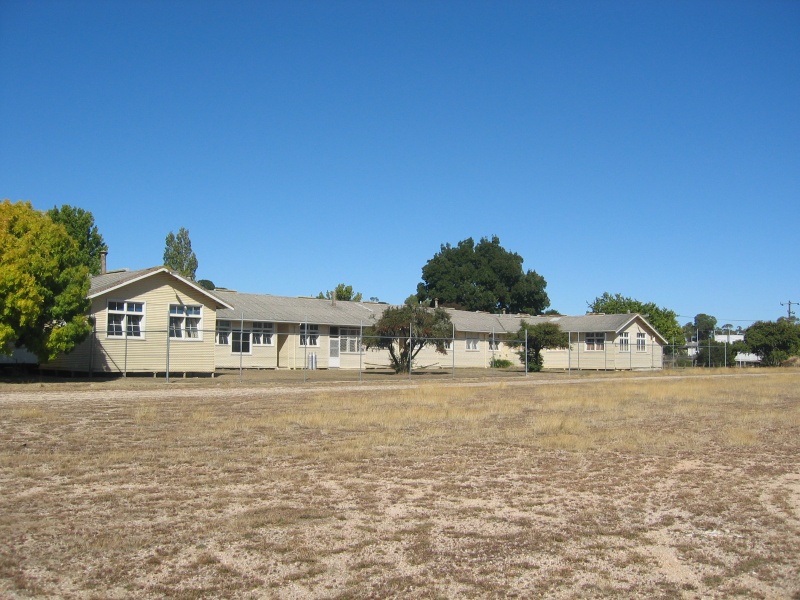
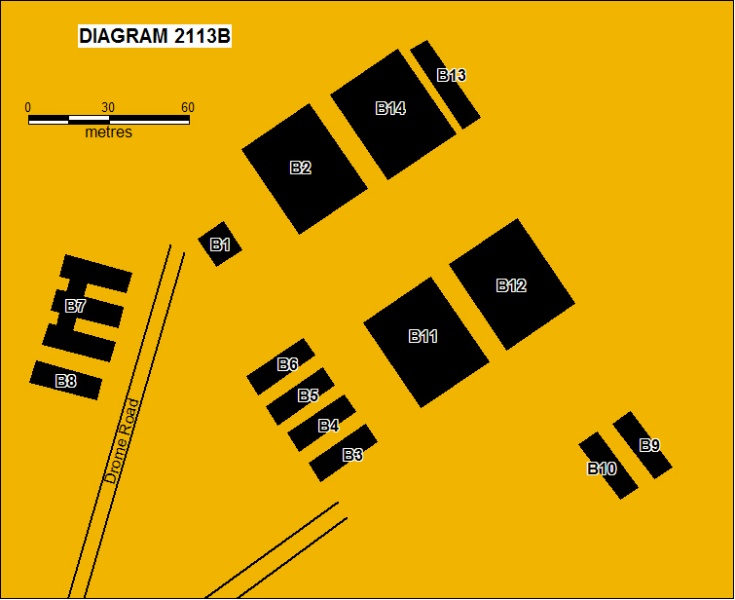
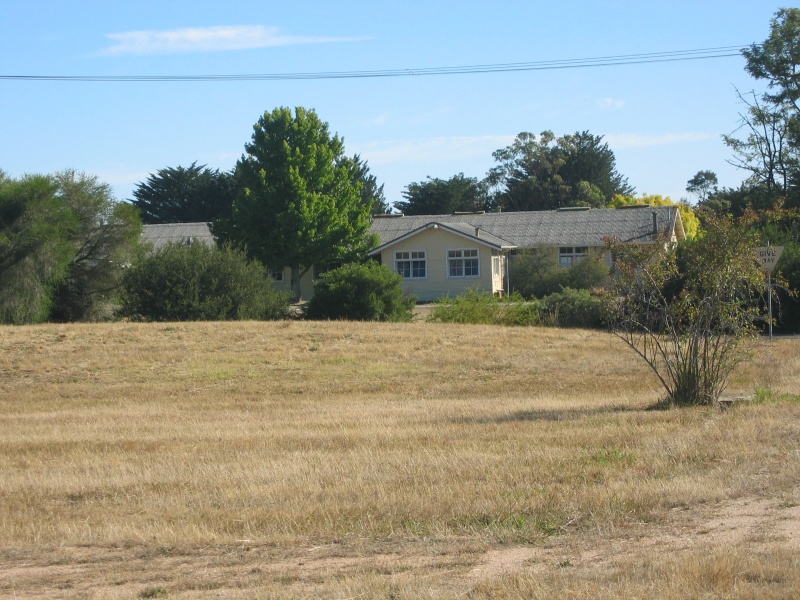
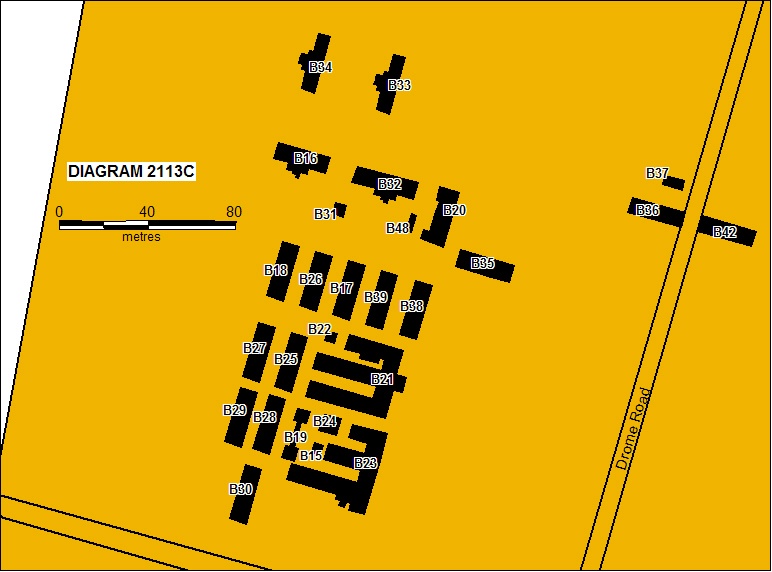
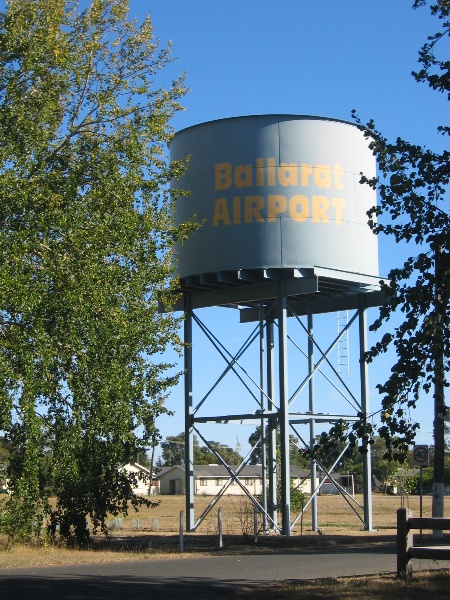
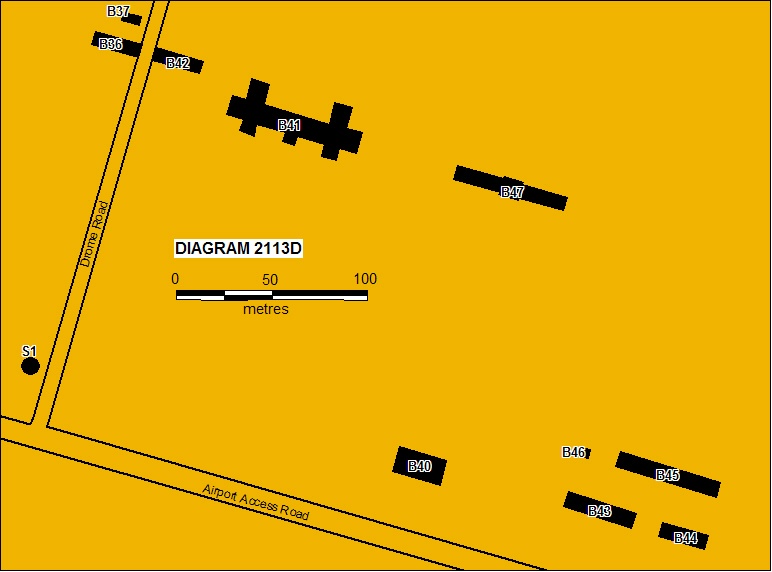
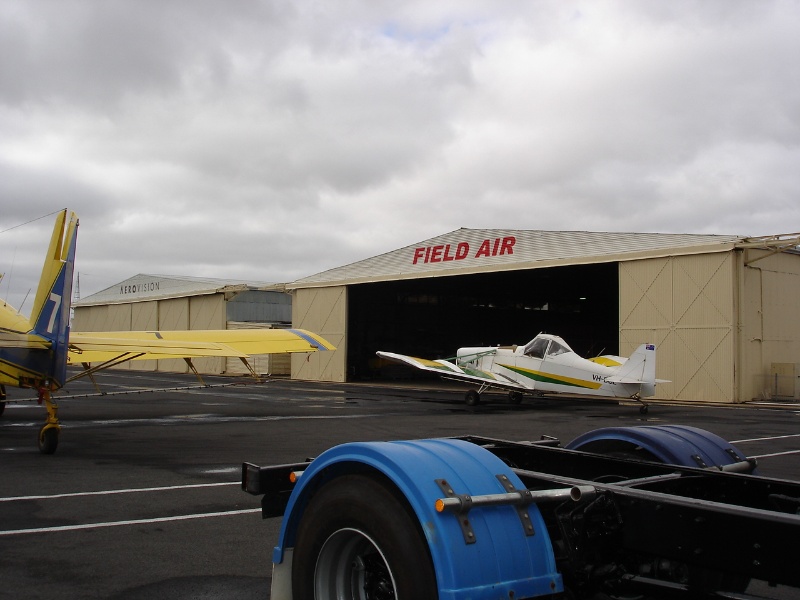
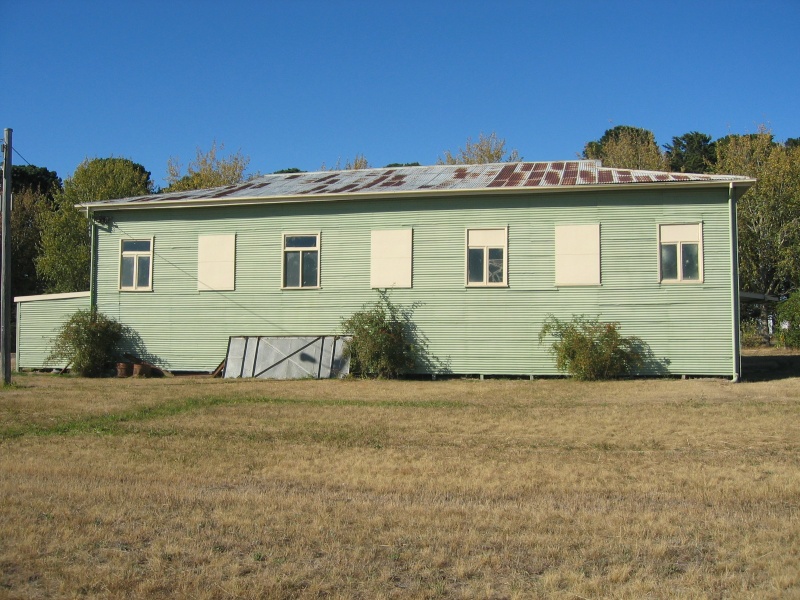
Statement of Significance
What is significant?
The former Ballarat Royal Australian Air Force (RAAF) Base on the site of the present Ballarat Aerodrome, 7 km northwest of Ballarat city centre was constructed in 1940 at the outset of the Second World War as a training school for Wireless Air Gunners under the Empire Air Training Scheme (EATS). The Scheme was established by the British with Canada, Australia and New Zealand to rapidly train air crews for the British Bomber Command to fight the then far superior German Air Force. Under EATS which operated from 1939-1945 the RAAF was committed to training 28,000 aircrew over three years including navigators, wireless operators, air gunners and pilots, equating to around 900 aircrew every four weeks. To achieve this the RAAF embarked on a rapid and extensive program establishing a network of 28 EATS schools in eastern Australia by the end of 1941, each specialising in specific skill sets required of air crew members. The former Ballarat RAAF Base was Australia's No.1 Wireless Air Gunners School (WAGS), the first of three WAGS created under the Scheme and the only one in Victoria.
By 1941 there were nearly 800 personnel on the former Ballarat RAAF Base and by the end of March 1942 a total of 1238 air men had been trained in the operation of radio equipment and guns using Avro Anson and Wackett aircraft. A radar training wing was also established at the former Ballarat RAAF Base in 1945. Basic training for wireless operators ceased in May 1945 by which time 5025 trainees has been through the school.
In consequence of the United States declaring war on Japan in Dec 1941 a strategic alliance with Australia was formed and in 1942 the RAAF Base at Ballarat was extended to accommodate a Liberator Bomber Squadron to assist in the prosecution of the Pacific War and in the strategic defence of Australia. The US forces camped immediately south of the residential area of RAAF Base where they constructed the Liberator Air Strip for use by their B24 bombers, large planes for the long range bombing missions required in the Pacific. By 1943 there were 80 United States aircraft at the base.
The Wireless Air Gunners School was formally disbanded in January 1946. The RAAF continued to operate the aerodrome until 1961 when it became the property of the Ballarat Council. The Ballarat Aerodrome continues to operate as a civil airport and the surviving Second World War structures on the site provide accommodation for a large number of community organisations including an aviation museum.
The extant Second World War structures associated with the WAGS are primarily 'P-Type Huts' and Bellman Hangars neither of which were originally intended to be permanent structures, having been prefabricated and erected on military sites throughout Australia in response to the sudden and urgent need for semi-permanent accommodation for service personnel and for aircraft hangars at the beginning of the Second World War. The P-Type Huts, consisting of a simple timber and corrugated iron box with a gabled roof usually with doors at each end could be easily modified as required for particular functions. By 1941 approximately 160 standard P-Type Huts had been erected on the Ballarat site in two distinct functional precincts. In the northern aerodrome precinct around fifteen huts, of which twelve survive, were arranged on the outside of a group of four Bellman hangars arranged in pairs a few metres apart. Bellman hangars had been designed in Britain immediately prior to the Second World War to provide a fast, economical solution to the need for aircraft facilities. The surrounding P-Type Huts were used for equipment and clothing storage, maintenance and administrative functions associated with the operation of the aircraft. At the centre of the base was the administrative, domestic and teaching precinct where over 140 huts were erected in rows, singly or in combination with additional roofs to create larger buildings. They were adapted for various uses including sleeping quarters, recreation rooms and messes, lecture halls, radio huts, stores, offices, workshops and ablution blocks. Thirty four huts remain in the central precinct. These include the former Officers' and Sergeants' Messes, sleeping quarters, ablution blocks, Headquarters, the maintenance and transport depot, stores, the gymnasium and several ablution blocks.
Other remaining fabric associated with the Second World War includes an elevated water tower, the foundations of demolished P-Type Huts and other structures and in the southern part of the site, the archaeological remains of the United States Air Force camp and the 'Liberator Air Strip'. Landscape features associated with the former Ballarat RAAF Base include road layout and the playing fields and parade ground with its border of Monterey Cypress (Cupressus Macrocarpa) that separate the aerodrome precinct to the north from the central domestic and administrative precinct.
How is its significant?
The former Ballarat RAAF Base is of historical and social significance to the State of Victoria.
Why is it significant?
The former Ballarat RAAF Base is of historical significance for its ability to demonstrate the importance of military aviation to the defence of Australia and its Allies during the Second World War, the first conflict in which aircraft played a major role in combat for the Australian military.
The former Ballarat RAAF Base is of historical significance for its association with the technical training aspects of the wartime development and operation of the RAAF. The former Ballarat RAAF Base is a representative example of the bases constructed to train aircrew under the Empire Air Training Scheme that included a contingent suite of temporary and semi temporary buildings that in their layout and surviving the Second World War fabric reflect both the training and domestic functions of the bases and the hierarchical nature of the military and domestic life on the Second World War bases. This contingent planning is clearly reflected in the two precincts of the former Ballarat RAAF Base - the aerodrome itself with the large prefabricated Bellman hangars and workshop huts, and the domestic and administrative precinct of standard P-Type Huts.
The former Ballarat RAAF Base is the most intact surviving Victorian example of the training schools that were rapidly constructed across Australia specifically to train aircrews under the Empire Air Training Scheme in the early years of the Second World War and representative of the inventive ways in which functional requirements of the military were satisfied during the war. The Ballarat RAAF Base was the first of three Wireless Air Gunnery Schools established nationally under the Scheme and the only such school in Victoria.
The former Ballarat RAAF Base is of social significance, providing an opportunity to educate about the operations of the Air Force throughout the Second World War, in particular the relationship of the Commonwealth allies against the German forces, particularly later in the war when personnel trained here were dispersed with others to serve with the RAF in Europe, and subsequently the increasing importance of the United States and Australian alliance during the Pacific campaign against the Japanese.
-
-
Former Ballarat Royal Australian Air Force (RAAF) Base - Physical Conditions
State of the Historic Environment survey report - Condition: Very Poor. See Events.
Veterans Description for Public
Former Ballarat Royal Australian Air Force (RAAF) Base - Veterans Description for Public
The former Ballarat Royal Australian Air Force (RAAF) Base on the site of the present Ballarat Aerodrome, 7 km northwest of Ballarat city centre was constructed in 1940 at the outset of the Second World War as a training school for Wireless Air Gunners under the Empire Air Training Scheme (EATS). The Scheme was established by the British with Canada, Australia and New Zealand to rapidly train air crews for the British Bomber Command to fight the then far superior German Air Force. Under EATS, which operated from 1939-1945, the RAAF was committed to training 28,000 aircrew over three years including navigators, wireless operators, air gunners and pilots, equating to around 900 aircrew every four weeks. To achieve this the RAAF embarked on a rapid and extensive program establishing a network of 28 EATS schools in eastern Australia by the end of 1941, each specialising in specific skill sets required of air crew members. The former Ballarat RAAF Base was Australia's No.1 Wireless Air Gunners School (WAGS), the first of three WAGS created under the Scheme and the only one in Victoria.
By 1941, there were nearly 800 personnel on the former Ballarat RAAF Base and by the end of March 1942 a total of 1238 air men had been trained in the operation of radio equipment and guns using Avro Anson and Wackett aircraft. A radar training wing was also established at the former Ballarat RAAF Base in 1945. Basic training for wireless operators ceased in May 1945 by which time 5025 trainees has been through the school.
In consequence of the United States declaring war on Japan in Dec 1941 a strategic alliance with Australia was formed and in 1942 the RAAF Base at Ballarat was extended to accommodate a Liberator Bomber Squadron to assist in the prosecution of the Pacific War and in the strategic defence of Australia. The US forces camped immediately south of the residential area of RAAF Base where they constructed the Liberator Air Strip for use by their B24 bombers, large planes for the long range bombing missions required in the Pacific. By 1943 there were 80 United States aircraft at the base.
The Wireless Air Gunners School was formally disbanded in January 1946. The RAAF continued to operate the aerodrome until 1961 when it became the property of the Ballarat Council. The Ballarat Aerodrome continues to operate as a civil airport and the surviving Second World War structures on the site provide accommodation for a large number of community organisations including an aviation museum.
The extant Second World War structures associated with the WAGS are primarily 'P-Type Huts' and Bellman Hangars neither of which were originally intended to be permanent structures, having been prefabricated and erected on military sites throughout Australia in response to the sudden and urgent need for semi-permanent accommodation for service personnel and for aircraft hangars at the beginning of the Second World War. The P-Type Huts, consisting of a simple timber and corrugated iron box with a gabled roof usually with doors at each end could be easily modified as required for particular functions. By 1941, approximately 160 standard P-Type Huts had been erected on the Ballarat site in two distinct functional precincts. In the northern aerodrome precinct around fifteen huts, of which twelve survive, were arranged on the outside of a group of four Bellman hangars arranged in pairs a few metres apart. Bellman hangars had been designed in Britain immediately prior to the Second World War to provide a fast, economical solution to the need for aircraft facilities.
The surrounding P-Type Huts were used for equipment and clothing storage, maintenance and administrative functions associated with the operation of the aircraft. At the centre of the base was the administrative, domestic and teaching precinct where over 140 huts were erected in rows, singly or in combination with additional roofs to create larger buildings. They were adapted for various uses including sleeping quarters, recreation rooms and messes, lecture halls, radio huts, stores, offices, workshops and ablution blocks. Thirty four huts remain in the central precinct. These include the former Officers' and Sergeants' Messes, sleeping quarters, ablution blocks, Headquarters, the maintenance and transport depot, stores, the gymnasium and several ablution blocks.
Other remaining fabric associated with the Second World War includes an elevated water tower, the foundations of demolished P-Type Huts and other structures and in the southern part of the site, the archaeological remains of the United States Air Force camp and the 'Liberator Air Strip'. Landscape features associated with the former Ballarat RAAF Base include road layout and the playing fields and parade ground with its border of Monterey Cypress (Cupressus Macrocarpa) that separate the aerodrome precinct to the north from the central domestic and administrative precinct.
Former Ballarat Royal Australian Air Force (RAAF) Base - Permit Exemption Policy
/nThe former Ballarat RAAF Base is a large site with many buildings and features which contribute to its cultural heritage significance. The management of proposed changes to the fabric of the place would be considerably facilitated by the preparation and adoption of a comprehensive conservation management plan.
/nSuch a plan could form part of a master plan for the future management of the place.
/n
In assessing the impact on cultural heritage significance, proposals for change to the physical fabric at the former Ballarat RAAF Base need to be considered from the standpoints of use and the three precincts discernible in the site.The list of features identified in the Extent of Registration, contribute in a fundamental way to an understanding of the historical and social significance of the site. These features are predominantly intact in building and fabric and are particularly demonstrative of the design and function of the site.
/nIt is apparent that these intact original features of the former Ballarat RAAF Base are of State significance and as such they should be retained, and if altered, then should be done with minimal impact on this original fabric.
/nIt is therefore important that any proposed changes to the features identified in the Extent of Registration are undertaken on the basis of clearly defined plans and proposals.
/nThe former Ballarat RAAF Base is an extensive complex of buildings and structures and the different activity areas reflect the varied nature and type of diverse operations undertaken at the site. Many of these operations and activities are represented by the associated heritage fabric. As these heritage features and items contribute in a fundamental way to an understanding of the site any changes or alterations must be planned and carried out in a manner which prevents damage to the fabric of the registered heritage place or object.
/n1. Use: Changes which enhance or reinforce the use of the place for aviation should be viewed in a positive light. It may be, for instance, that more hangarage or workshop facilities are needed to support this use. Insofar as new facilities, or the adaptation of existing facilities, do not have an undue negative impact on the extant Second World War fabric, they should be allowed. The Second World War era produced a large number of buildings, principally the British designed, prefabricated Bellman hangars, as well as the P-Type Huts found on so many wartime sites. The buildings of this era are evocative of the enormous wartime expansion and the exigencies of the time.
/n2. Precincts: The former Ballarat RAAF Base was initially constructed in the three distinct and well-defined precincts that are still clearly evident on the site. The distinctiveness of these precincts should be protected.
/na) The north tarmac area is dominated by four Bellman hangars. Theses are directly related to military aviation use and proposals to alter, relocate or remove them should be examined very carefully for their effect on the cultural heritage significance of the place. Although designed as temporary and relocatable hangars, they have been at the former Ballarat RAAF Base since its construction and relate to a significant episode in Australian military and aviation history. Associated with the Bellman hangars are twelve P-Type Huts surviving from the Second World War use of the site as a Wireless Air Gunners Training School. These had a range of uses associated with the training function of the base including storage of flying equipment and crew rooms. The number of huts and their layout closely reflects the original Second World War organisation of the area and any proposal to demolish, significantly alter or relocate these structures should carefully weigh this against proposed changes. There have been a number of recent additions to existing huts and new structures that are of no intrinsic significance.
/nb) At the centre of the site is the administrative, domestic and teaching precinct of the former RAAF Base where over 140 huts were originally erected and adapted for various uses including sleeping quarters, recreation rooms and messes, lecture halls, radio huts, stores, offices, workshops and ablution blocks. Thirty four huts remain in this precinct along with the archaeological remains of demolished huts and a number of associated features including the elevated water tower. The formal planning of the street layout, the accommodation structures, the parade ground and associated tree plantings are significant elements of the central precinct and should be respected in any future development on the site. Proposals to make internal or external alterations to the huts, to demolish or relocate the them or other structures within this precinct should not only take into account the individual or group significance of the buildings, but also the character of the surrounding area. This said there is great scope for sympathetic adaptation within the precinct.
/nc) The third or southern precinct is formed by the former United State Air Force camp and the Liberator Air Strip. The significance of the former Ballarat RAAF Base is principally related to its establishment under the Empire Air Training Scheme early in the Second World War but the former Ballarat RAAF Base is also of significance for its role in support of the United States Air Force in the Pacific campaign against the Japanese. The archaeological remains of the US camp and the existence and alignment of the Liberator Air Strip reflect this significance and conservation of these features of the southern precinct is important to the overall understanding of the site.
/nThe open space that separates the northern aerodrome precinct from the central domestic and administration precinct of former RAAF Ballarat Base contains two sporting ovals and is of cultural significance as the recreation area of the former RAAF Base. This open space defines the main functional precincts of the site and its recreational function should be retained.
/n
-
-
-
-
-
FORMER BALLARAT RAAF BASE
 Victorian Heritage Register H2113
Victorian Heritage Register H2113 -
Former Ballarat Royal Australian Air Force (RAAF) Base
 Vic. War Heritage Inventory H2113
Vic. War Heritage Inventory H2113 -
FORMER BALLARAT RAAF BASE
 Ballarat City H2113
Ballarat City H2113
-
-


